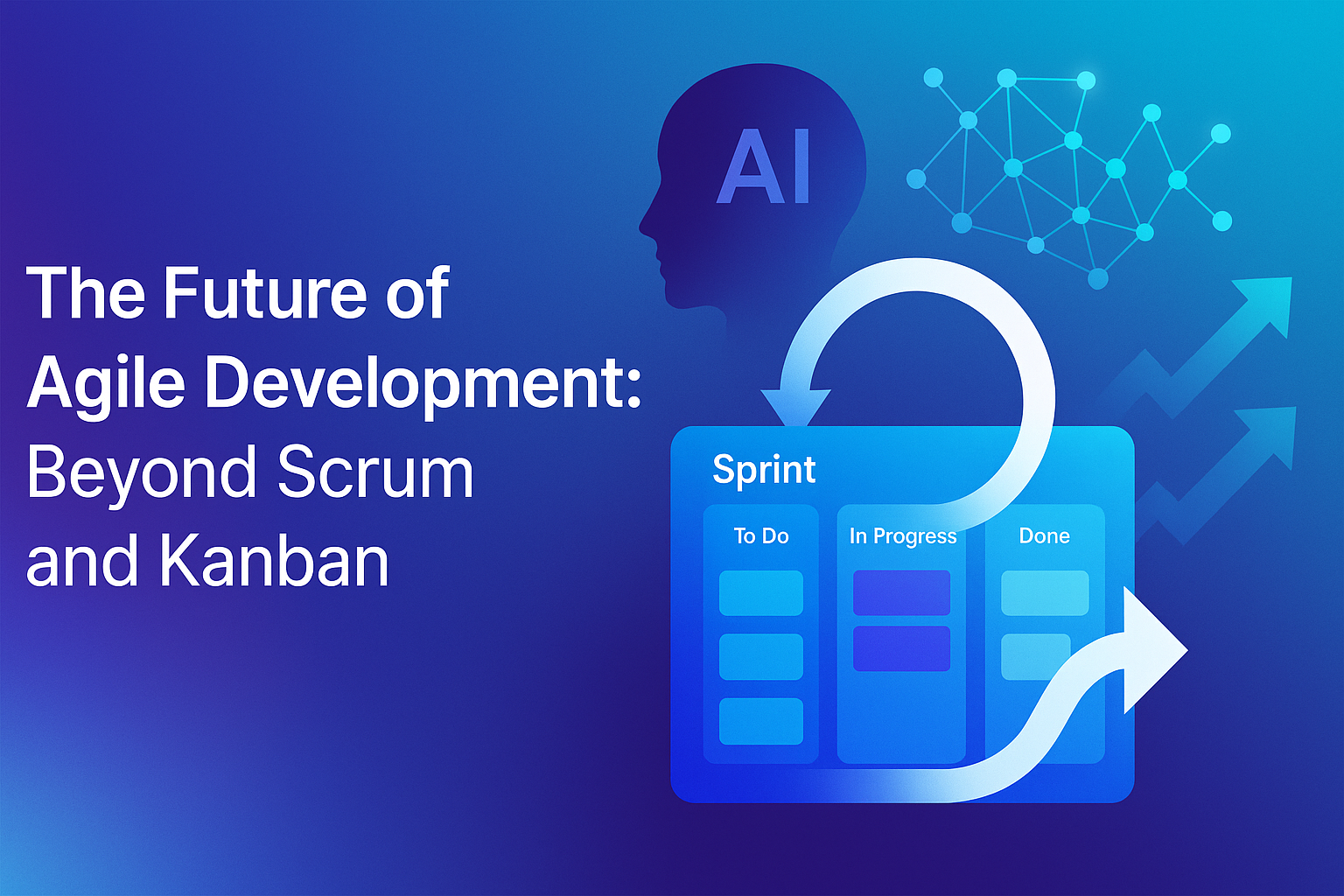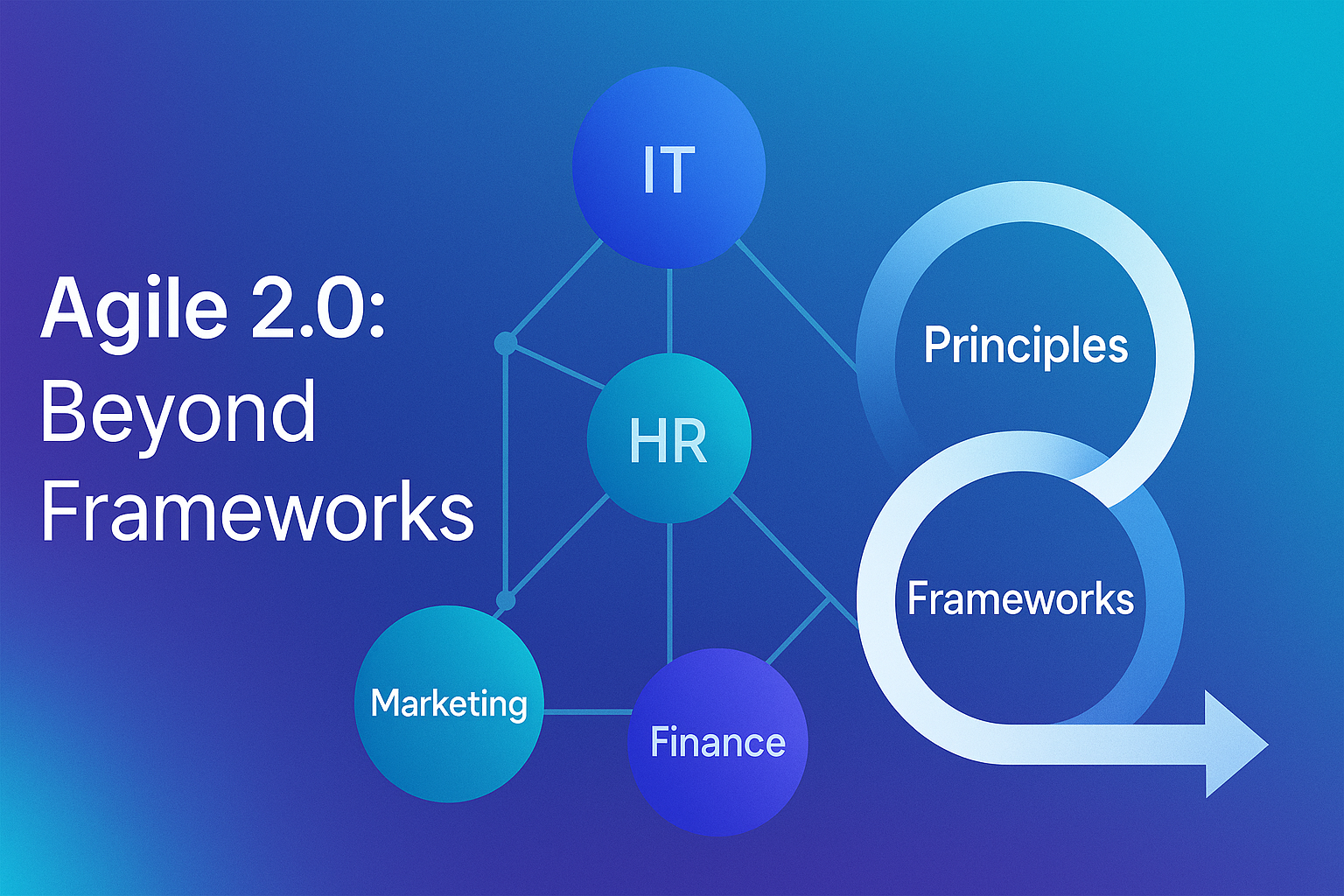The Future of Agile Development: Beyond Scrum and Kanban

Shi Hao, Founder

The Future of Agile Development: Beyond Scrum and Kanban
In 2025, the future of agile development is no longer limited to Scrum and Kanban. While these frameworks have been cornerstones of agile adoption in Malaysia, Singapore, and across the globe, businesses are demanding more adaptive, value-driven, and technology-augmented approaches. The new frontier of agile is about blending frameworks, leveraging AI, scaling agility beyond software teams, and connecting product development with business outcomes.
This article dives into what lies beyond Scrum and Kanban, exploring how forward-thinking organizations in Malaysia and Singapore are adopting Agile 2.0, AI-driven project management, Lean Portfolio Management (LPM), continuous discovery practices, andDevOps at scale to stay competitive. With insights from global research, regional case studies, and data-driven perspectives, you’ll walk away with a clear roadmap of where agile is headed—and how your business can keep up.

1. Why Scrum and Kanban Alone Are No Longer Enough
Scrum and Kanban were designed to solve very specific challenges:
Both have delivered immense value. A 2024 VersionOne State of Agile, Report found that:
But here’s the catch:
In short, while Scrum and Kanban are excellent at team-level execution, theystruggle to connect strategy to execution in large organizations.

2. Agile 2.0: The Next Evolution
The term Agile 2.0 has gained traction as a way to describe the movement beyond rigid frameworks. Key shifts include:
McKinsey Research (2024): Companies adopting enterprise-wide agile beyond IT saw 30–50% improvement in operational performance and20–30% higher employee engagement.
3. The Rise of AI-Driven Agile
One of the most significant trends in the future of agile development is the integration of AI and machine learning.
How AI is shaping agile practices:
Regional Relevance
In Malaysia and Singapore, where developer shortages and rising wages are pressuring IT budgets, AI-driven agile tools help smaller teams deliver enterprise-level outcomes.
IDC Asia-Pacific(2025): 62% of enterprises in Singapore are investing in AI-powered project management tools to accelerate software delivery.
4. Lean Portfolio Management (LPM): Aligning Strategy to Execution
One of the biggest gaps in traditional agile adoption is connectingexecutive priorities to delivery teams. This is where Lean Portfolio Management (LPM) steps in.
What is LPM?
Why it matters for Malaysia & Singapore
businesses
Scaled Agile Inc. Data: Companies using Lean Portfolio Management experience 35% faster time-to-market and 25% higher ROI on technology investments.
5. Continuous Product Discovery: Beyond Delivery
Traditional agile emphasizes delivery velocity. But in 2025, building the wrong product fast is still failure. Enter continuous product discovery.
Core practices:
Regional Example
6. DevOps + Agile at Scale
Agile without DevOps can deliver faster sprints but fail in production.
DevOps without agile can automate broken processes. Together, they
create end-to-end agility.
Key practices:
Gartner (2024): Enterprises combining agile + DevOps reduce time-to-market by 70%compared to traditional waterfall organizations.
Regional adoption
7. Agile for Business Teams
Another major trend: Agile is no longer confined to IT.
Deloitte SEA Report(2024): Companies that adopt cross-functional agile (IT + HR + Finance + Marketing) report23% faster decision-making and 18% higher revenue growth in Southeast Asia.
8. Regional Insights: Malaysia and Singapore
Malaysia
Singapore
Both countries are leveraging agile as a competitive differentiator, but with different maturity levels:
9. The Human Side of the Future of Agile
Agile is not just frameworks or tools—it’s culture.
Harvard Business Review (2024): Teams with strong agile culture (trust, adaptability, learning focus) outperform rigid teams by 45% in innovation and 30% in customer satisfaction.
10. The Road Ahead: Key Predictions for 2025–2030
1. AI-powered Agile Coacheswill replace manual retrospectives with data-driven insights.
2. Agile + Sustainability: ESG goals will be built into backlogs and sprints.
3. Blockchain in Agile: Immutable sprint logs for regulated industries.
4. Global Talent Pools: Malaysia and Singapore will tap cross-border agile squads as remote work normalizes.
5. Outcome-Based Agile: Shift from velocity metrics to business value delivered.
Conclusion
The future of agile development in Malaysia and Singapore is bold, adaptive, and far-reaching. Scrum and Kanban will remain useful, but they are no longer enough.
Tomorrow’s winners will embrace:
For businesses in Malaysia and Singapore, this is not just about software—it’s about building future-proof organizations. Your time is valuable, and the key takeaway is this: Agility is evolving from team rituals to enterprise strategy, powered by AI, continuous learning, and customer obsession. The companies that adopt these practices will not only deliver software faster—they will deliver business outcomes better.
Need expert development services? AppBay Studio can help bring your vision to life. Contact us for a consultation.
Ready to build your custom solution?
AppBay Studio specializes in enterprise-grade custom development with proven frameworks and accelerators. Contact us for a consultation.
👉 Book a working session
About the Author
Shi Hao, Founder
